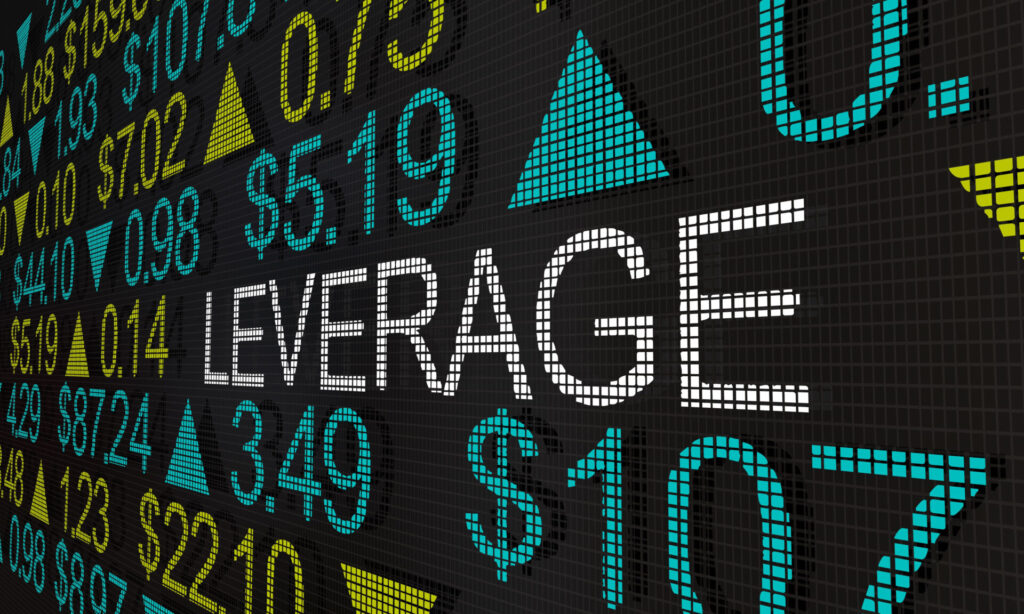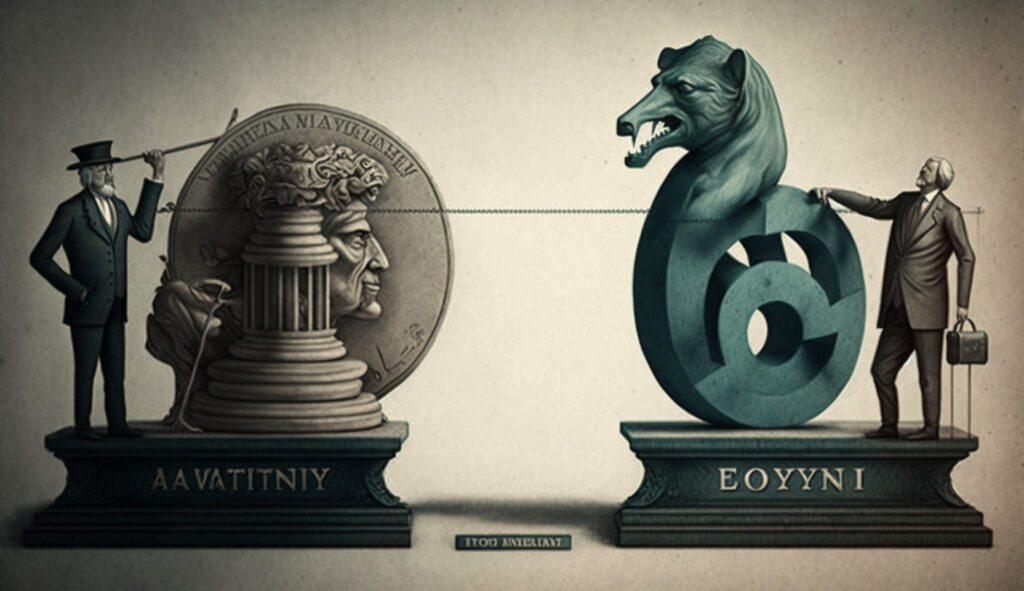
Table of Contents
Many novice traders in the Forex market often focus solely on returns when evaluating their trading strategy, which is a common mistake. Every trade carries a certain level of risk, the risk of potential losses. To accurately evaluate a trading strategy’s performance, it’s crucial to consider both returns and risk. This is true not only for Forex trading. But how can we do this? Well, for one thing, we can take a cue from portfolio managers, traders, banks, and other investment professionals who use specific methods to evaluate performance.
One of the many measures they use is the Sharpe ratio. It is relatively easy to calculate and extremely powerful. It allows us to see how much return a forex strategy earns per unit of risk, as expressed by the standard deviation (which is how we measure the risk of an investment in the industry). You can also use it to evaluate the performance of the forex money managers, forex robots, and signal providers. In our article, we will explain how to calculate the Sharpe ratio and how to use it. So, stick around.
What is the Sharpe ratio?
In contrast to novice traders, experienced forex money managers apply a myriad of different metrics to evaluate how effective a strategy is. After all, they understand that every investment always carries a certain level of risk. One such metric is the Sharpe ratio. It calculates the excess return of the strategy. It is the return beyond what we would earn from a risk-free investment, such as a Treasury bill. This excess return is our reward for taking on additional risk. It also considers the standard deviation (volatility) of the strategy’s returns. Volatility is used as a proxy for risk.
The Sharpe Ratio compares the excess return to the risk (volatility). It tells you whether the additional return earned by the strategy justifies the level of risk it carries. A higher Sharpe Ratio indicates a better risk-adjusted return. In short, the Sharp ratio is the excess return of a strategy per unit of risk.
The Sharpe ratio allows us to:
- Compare different strategies (read forex money managers, signal providers, etc.) based on their risk/return profile.
- Select a more attractive strategy that maximizes return in relation to risk.
Sharp Ratio Formula
The formula of the Sharpe Ratio is as follows:
Sharpe Ratio =
(Rp – Rf) /StdDevP
Rp – (Return of the Investment Strategy) represents the actual return or performance of the investment strategy during a specific period (e.g., daily, monthly, yearly). You can also assess its increase compared to the previous period for performance evaluation.
Rf – (Risk-Free Rate) is the theoretical risk-free rate. Investment professionals often use US Treasury bills or bonds as the risk-free rate. These instruments are considered among the most safe in the world and serve as a benchmark for measuring investment performance.
StdDevP -(Standard Deviation). In simple terms, standard deviation measures the degree of variability or how spread out a set of numbers or data points is. It provides insights into whether the data points are clustered closely around the average (low standard deviation) or widely dispersed (high standard deviation).
The rule of thumb for understanding the values of the Sharpe ratio is that the higher the value is, the more attractive the strategy. If two strategies have produced the same return but have different Sharpe ratios, the one with the lower ratio is riskier.
How do we use the Sharpe Ratio?
Now, let’s delve into how the Sharpe ratio works. Imagine two forex money managers approaching you, both seeking your investment. As a savvy investor, you request to see their trading history. Let us say they provide you with a month’s worth of data. It’s not perfect, not terrible, either.
Once you have their historical performance data, you can begin doing your calculations. And we are not going to need any fancy or expensive tools to do that. All we are going to need is Google sheets. Let us get cracking. Now we can calculate the overall return both our manager have been able to achieve over a month and their respective standard deviations. Both our managers started their month with USD100 (highlighted red).
Calculating Standard Deviation
To calculate the standard deviations, we will need daily changes in the balance. You can see them in the table designated Rolling total. Now that we have calculated our daily changes, we express them as percentages in the column designated Rate of Return. With the daily percentage changes we can calculate standard deviations. We will use the standard Google sheet function “STDEV“.
Standard deviation serves as a statistical measure that quantifies the degree of variation or dispersion in the returns of a portfolio. Portfolio managers use standard deviation to evaluate and manage risk effectively. Lower standard deviations in portfolios indicate greater stability and predictability in returns.
Interpreting Standard Deviation
Our money manager number one has been able to achieve a monthly return of 205% with a standard deviation of 47.26. And our manager number two has generated a return of 235% with a standard deviation of 14.9%. Both our managers more than doubled their initial account size. However, the first manager has been more risky. There was more variation in his strategy. Our manager two, on the other hand, not only doubled his account, he did so, with a lot let variance. Just by looking at these two metrics we can tell, that the second manager is more attractive that the first one. Not only did he show better results. He was able to achieve them with less risk. But let us see what the Sharp ratio will tell us.
Risk-Free Rate
The second ingredient needed to calculate the Sharpe ratio is the U.S. Treasury bond yield. You can find the current yield at this link. As of the time of writing this article, the yield on the U.S. 12-month bond stands at 5.38%. To use it in our Sharpe ratio calculation, we must adjust it to match our one-month trading data. To do this, divide the 5.38% annual yield by 12 months, resulting in a monthly return of 0.4483%. With all three components, we can now calculate the Sharpe ratio for our forex money managers.
Manager one = 205-0.4483/47.26=4.32
Manager two = 235-0.4483/14.19=16.52
Interpreting the Results
What do these values mean, and what do they tell us? As mentioned earlier, a higher Sharpe ratio is better. To understand it more intuitively, consider the components of the ratio: in the denominator, we have the standard deviation, a widely accepted measure of risk in finance. In the numerator, we calculate the difference between the return generated by a money manager and the risk-free rate.
This difference is often referred to as ‘excess return.’ When we divide this excess return by the standard deviation, we obtain the excess return per unit of risk. In simpler terms, the higher this value, the more return we get for the amount of risk we take, making it a better proposition for investors.
Just as we suspected, the Sharp ratio for our money manager number two is higher, and his strategy looks relatively more attractive compared to that of manager one.
Limitations of the Sharp Ratio
While it provides valuable insights, it also comes with some limitations. One of the most significant drawbacks of the ratio is its assumption that returns follow a normal distribution, which may not always hold true in real financial markets. Financial markets often exhibit fat tails, indicating a higher probability of extreme events. This means that the Sharpe Ratio may not be suitable for assets with non-normal return distributions or for alternative investments with complex risk-return profiles.
Another disadvantage of the Sharpe Ratio is its reliance on a risk-free rate of return, such as the yield on government bonds. In reality, risk-free assets may not always be accessible, and their yields can change over time.
Additionally, the Sharpe Ratio is sensitive to the chosen investment horizon. Shorter periods can result in higher Sharpe Ratios due to lower volatility, and the opposite may be true for longer periods. Therefore, it’s advisable to use the ratio on longer periods or, better yet, on periods of different lengths.
Conclusions
The Sharpe ratio relies on the three main components: your earnings (averaged over different time frames), the risk-free rate, and standard deviation. It’s most useful when comparing similar trading strategies rather than just looking at a single strategy’s value.
Despite its limitations, the Sharpe Ratio remains a valuable tool for comparing performance of forex money managers or portfolios as long as its assumptions and constraints are recognized. It is often used with other risk-adjusted performance measures to provide a more comprehensive analysis.
If you have any questions or find anything you disagree with, including the math, please share in the comments. If you found our article helpful or have questions, please leave a comment below. And if you liked it, you can also share it on your social networks as a way of saying thanks!
Do The Smart Thing. Subscribe!
Get notified about our new articles and insights.




